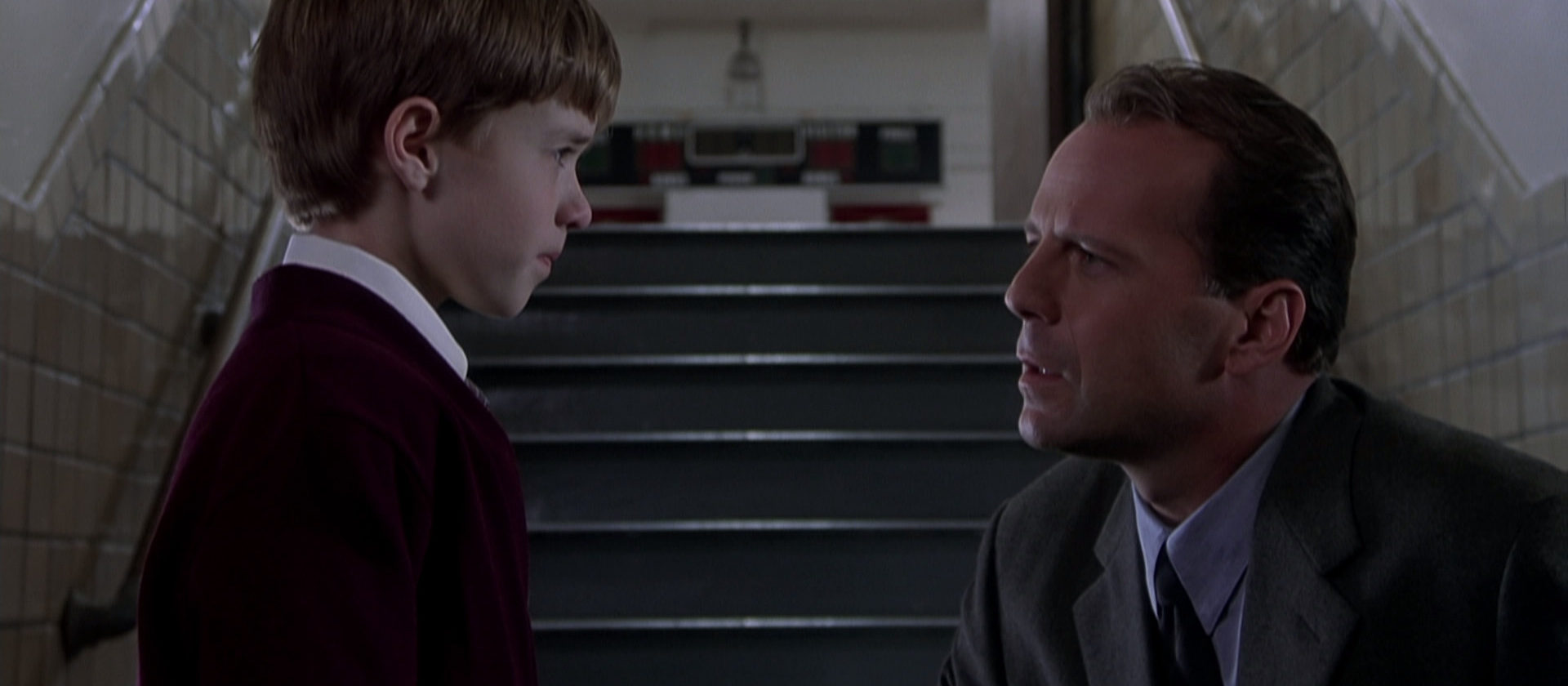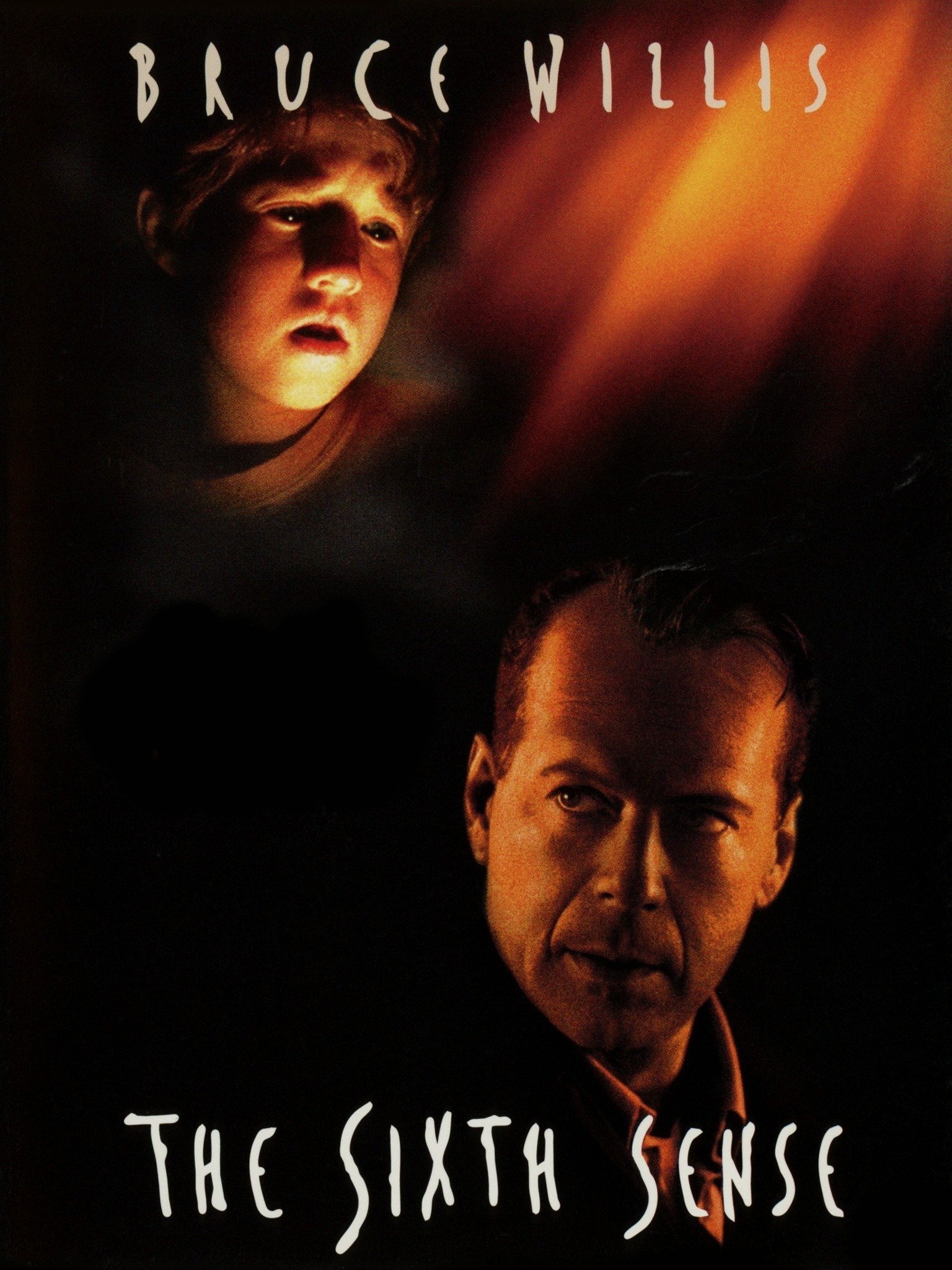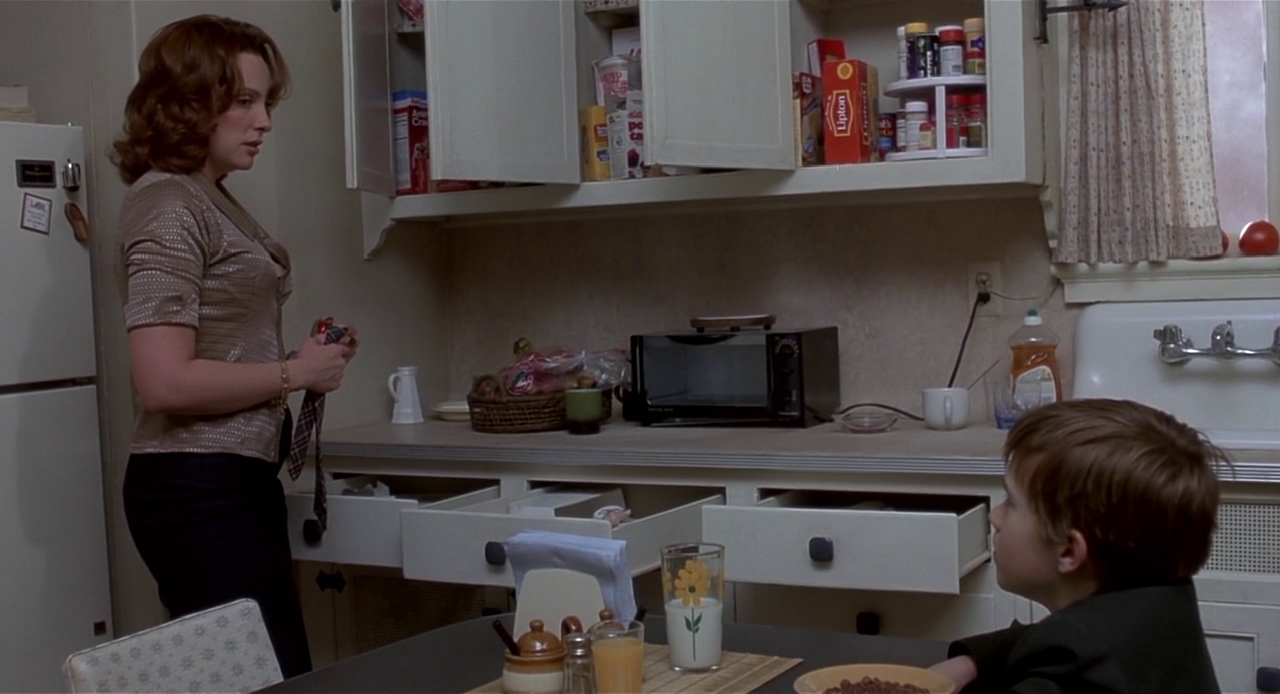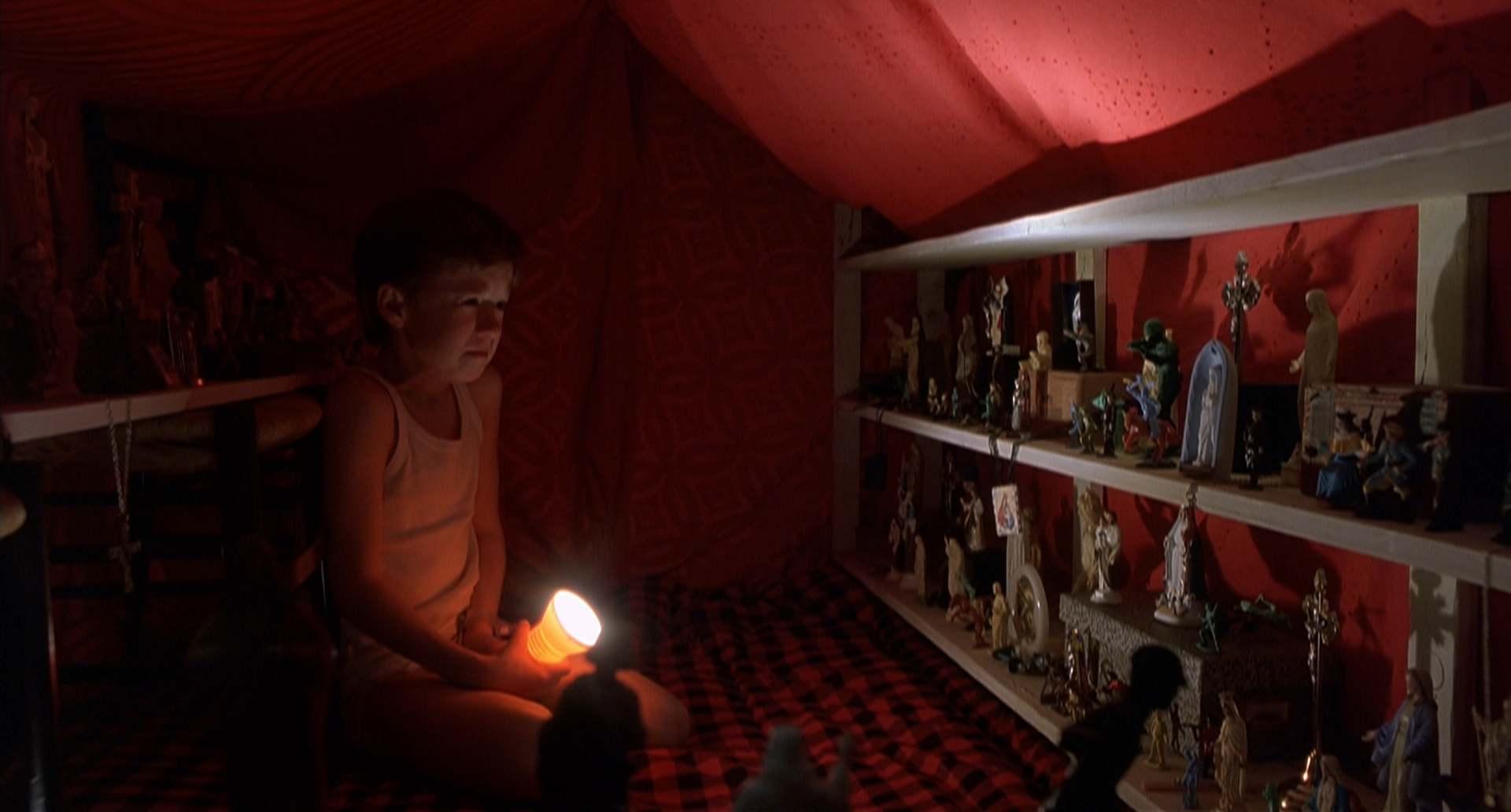

“Well, you have to add some twists and stuff.”
I went a remarkably long time without seeing The Sixth Sense and without anyone spoiling it for me. Unfortunately, by the time I finally got around to it, I’d picked up enough hints and references and seen enough of M. Night Shyamalan’s films that I happened to guess the big twist in its entirety before the first scene had even ended. This unfortunate fact makes it quite difficult to analyze the film; doubly so because, as Shyamalan has fallen out of favor, his most successful effort has been retroactively downgraded to some kind of fluke novelty. But it’s no fault of the film itself that it became so popular that one simply cannot approach it without spoilers and preconceptions.
Even though it’s become something of a punchline, at the time The Sixth Sense was lauded for its twist ending. There’s the famous line that occurs in the middle but an even bigger rug-pull in the closing sequence. While these curveballs would undoubtedly exert a more powerful spell over an unknowing audience, it wasn’t the twists alone that allowed the film to transcend its modest ghost story trappings and become one of the highest grossing horror films of all time.1 I am so convinced of this fact that I don’t hesitate to posit that it remains a great film the second time—a commendable feat for a film with such drastic narrative surprises.
Shyamalan, as usual, proves capable of conjuring suspense out of the mundane. In the opening scene, Anna (Olivia Williams) descends into her home’s dank basement to retrieve a bottle of wine. Something prickles at the edge of her subconscious, and despite herself, she shudders in childlike fear. Taking the wine back upstairs, she settles in by the fire with her husband, Dr. Malcolm Crowe (Bruce Willis), and reads aloud from a plaque he has recently received from the mayor of Philadelphia for his renowned work in child psychology. But just as soon as the couple begin tipsily tumbling upstairs to bed, an intruder disrupts the proceedings. The trespasser, one of the doctor’s former patients, is deranged and armed. He launches into a diatribe against Crowe’s failure to cure his mental illness then pops the doctor in the belly and himself in the head.

We jump ahead to the next fall, Crowe now hale and healthy, his frightening standoff behind him. He’s currently working on the case of Cole Sear (Haley Joel Osment), a young boy who is intelligent and introverted, but prone to lying, stealing, and self-harm. Unsurprisingly, Cole has few friends and doesn’t fit in at school. At home, his mother Lynn (Toni Collette) routinely reprimands her son for behaviors that she can’t explain. Why is he always taking her mother’s old pendant from her dresser? Why does he open every cabinet and drawer in the kitchen when looking for Pop-Tarts? Cole tries to maneuver his mother’s wrath tactfully but you get the sense that his misdeeds are not the typical mischief of a rebellious child. After a traumatic episode with two of his classmates, Dr. Crowe commits himself to rooting out the cause of Cole’s erratic behavior and uncovering the secrets that the boy has heretofore refused to divulge.
Cole’s big secret, of course, is that he can see dead people. Even worse, they don’t realize that they’re dead. The rules of Shyamalan’s spirit world are ill-defined, but we don’t realize this as we’re cruising along on the thrill ride. The performances from Osment, Willis, and Collette (and even smaller roles like Williams, Donnie Wahlberg, and Bruce Norris) are uniformly stellar, which is crucial to keeping up the mystique in a psychological horror film like this one. Osment in particular is incredibly emotive with facial expressions and tones of voice. His performance is a little bit one-dimensional but he is supremely capable of handling that one dimension. Willis is more contemplative and playful, while Collette provides emotional depth, both of them showcasing great chemistry with the child star.

Once the initial chill wears off (and yes, even when you know what’s coming, it’s still goosebump-inducing stuff), one might be tempted to dismiss the film for manipulating its audience. But watch it again and you’ll find that it stands up quite well and justifies the excitement that surrounded Shyamalan at the time. The Sixth Sense finds him firing on cylinders, writing, directing, and even briefly acting. He delivers a tight, layered screenplay that rewards repeat viewing and marries it with sharp direction that effortlessly generates chills as the spirit world intrudes on “real” one. Cole’s haunting ability is the centerpiece of the film and sets the stage for all manner of spooky sequences, but Shyamalan doesn’t even reveal it until halfway through and spends the runtime juggling horror elements with more relatable narrative strands—erratic social behavior in children, coping with family tragedy, loveless marriage. Despite the often terrifying build-up, the film unexpectedly turns to more positive themes as its narrative resolves. The twist ending is what got people in theaters, but it’s Shyamalan’s uncanny ability to evoke tears and shivers in close proximity that puts The Sixth Sense a cut above all the films that tried to capitalize on its success in the following years.
1. If you like knowing useless trivia, take a look at Wikipedia’s page for the highest grossing horror films. Notice anything interesting? Not only is The Sixth Sense near the top of that list, but Shyamalan is one of only two directors who have made horror films based on original ideas that made boatloads of money. Shyamalan’s done it four times, Jordan Peele twice. Plus, the two sequels to Shyamalan’s Unbreakable are also on that top 50 list.